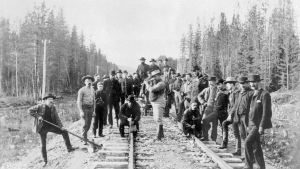As the world continues to seek solutions to a housing emergency that is reaching all corners of the globe, architects are increasingly being called on to contribute solutions.
So it was appropriate that the International Architectural Roundtable held during the Buildings Show in Toronto Nov. 29 was billed as Design Solutions for the Housing Crisis.
Delegates were told the crisis will affect an estimated 1.6 billion people by 2025, fuelled by a shortage of land, lending, labour, materials and effective policies.
“We believe our profession can offer new technologies and approaches that advance climate action and focus on intensification in already developed areas,” commented Settimo Vilardi, president of the Ontario Association of Architects, sponsor of the roundtable.
The session started with a focus on Toronto. The city’s newest tool for “citizen developers” to create multiplexes where singles now rule is called ReHousing.
It’s a redevelopment kit created to transform and intensify Toronto’s Yellow Belt. The initiative is a research collaboration of LGA Architectural Partners and Tuf Lab.
Janna Levitt, partner in charge at LGA, told delegates that ReHousing is a proposal that is “based on the local” but its partners and supporters believe it has global relevance.
“ReHousing helps to create modest, well-designed housing that is accessible to people looking for good housing, or entering the market or as empty nesters who want to stay in a stable neighbourhood but need to create more units in order to do that,” explained Levitt.
The Yellow Belt, which until recently was the exclusive domain of single-family residences, has traditionally included profound restrictions on development, Levitt said. But with the advent of multiplexes as-of-right in Toronto, there are significant opportunities for redevelopment. The ReHousing collaborators conducted an analysis of lot sizes and developed a typology of 13 basic housing types.

“From there we formed demonstration typologies to illustrate opportunities for redevelopment,” said Levitt.
“The design catalog drills down into each of the 13 types and demonstrates a range of development possibilities. We’ve organized each of the 13 typologies by the degree of investment required and how one can layer those things over time.”
The initiative is still being developed but Levitt believes that as redevelopers learn how to use the toolkit, a feedback loop will be created to improve the process. More advanced costing spreadsheets and more videos about the costs, the steps and professionals required will be developed over the next year.
The next panellist, Ouri Scott, principal with Vancouver’s Urban Arts Architecture Inc., is the first Indigenous female architect in British Columbia. The discussion in the province is usually about housing affordability “even for people who are making lots of money,” Scott said, but what’s often missing is the realization that the problem goes deep into the province’s underbelly.
“How bad is the problem? It’s bad,” she said. “We have seen a 32-per-cent increase in homelessness in the last two, three years. That’s huge. These are figures from the homeless count in Vancouver. We are living on the streets. You turn on the news, you can see it. We have tent cities. We have a drug and alcohol crisis.”
Many people who live on the streets are Indigenous, Scott said, as the community continues to suffer from the impacts of colonization and residential schools, which existed just a couple of generations ago.
“So what’s being done? The housing crisis really needs to be solved with funding from the government and with good policy. I think architecture comes afterwards,” said Scott.
Projects aiming to create dignified housing spaces for Indigenous people have included the Aboriginal Land Trust Housing and Healing Centre in Vancouver’s Downtown Eastside and the Ho’-kee-melh Kloshe Lum project.
“I think we have an opportunity to make a difference and to provide some of those design solutions and to advocate for livable homes, advocate for community building and support community groups that are trying to develop new tenures,” said Scott.
Ontario-born Alison Brooks, principal of U.K.-based Alison Brooks Architects, further made the case that powerful leadership with enlightened policies can turn things around. London Mayor Sadiq Khan has reshaped the social housing brand of the city since his election in 2016.
“Design solutions are only one part of addressing the housing crisis,” she said. “London has a housing crisis. It’s been in crisis I think since around 2000, the last 23 years, and seems to be getting worse, but positive things are happening.”
Social projects of note include Rubicon and House for Artists, Brooks said, and everyone is watching the progress of Transport for London, which is leveraging its excess properties to create tens of thousands of new homes. In fact, Transport for London is now the city’s third largest landlord.
Brooks is also active in Ontario, with a 69-storey tower in Toronto’s Quayside currently in development.
“Our projects are all about creating a fantastic public realm,” she said.
Follow the author on Twitter @DonWall_DCN.










Recent Comments
comments for this post are closed